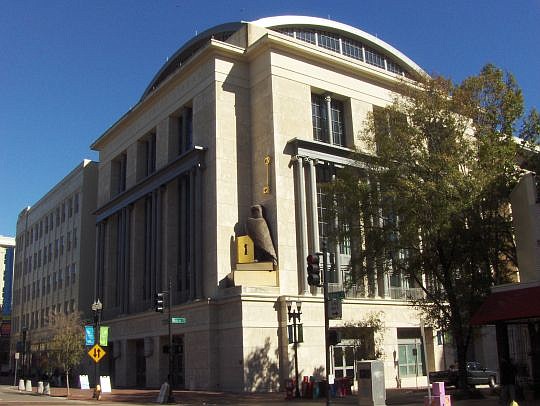
When school bells rang Monday morning, it signaled 60,000 public school students having unprecedented access to knowledge and learning.
Through a partnership between Duval County Public Schools and the Jacksonville Public Library, every student enrolled in grades K-5 will be authorized to check out books and other materials at the Main Library and at neighborhood libraries.
Duval County Public Schools Superintendent Nikolai Vitti said the program is intended to build cultural awareness and make more resources available to the youngest students in the system.
“They will have access to reading materials they don’t have at home and they don’t have in the classroom,” he said.
With just their school identification card, the students will be able to check out up to three print or audio materials. Also included is access to all of the library’s electronic and digital collections and use of library computers.
No application or signature from a parent or guardian is required and no late fees or fines for lost materials will be assessed.
“It’s important to make using the library as easy as possible. Our focus is to get books into children’s hands with as few barriers as possible,” said Jacksonville Public Library Director Barbara Gubbin.
Access to the public library will complement the media center resources available at the schools, which will remain a resource, Vitti said, but public schools don’t have the resources to equal the collection of information available at the public library, currently 2.9 million books plus digital materials.
“There is something special about Jacksonville’s public libraries. There is access to all information,” said Vitti. “And they are open after school and on weekends.”
Library Deputy Director Jennifer Giltrop said there is another advantage to the increased access for young readers. Eventually, studying the borrowing patterns of the students will help the library better serve its customers when it acquires new inventory.
“We’ll track use by school and by grade. Evaluating the usage and types of materials will affect purchasing decisions,” she said.
Another part of the initiative will be class visits to libraries for K-2 students who attend schools in low-income neighborhoods. Vitti said the school board is seeking private donations to underwrite the cost of providing school buses for the field trips.
“We want to help all students realize there are resources available,” he said.
For grades 3-5, public librarians will visit classrooms to help students work on literacy and research projects, Gubbin said.
Teachers in public, charter and private schools also will have greater access to public library resources this school year through the program.
The Educator Card allows a teacher to check out up to 100 books for six weeks. No overdue fines will be assessed, but cardholders will be responsible for lost or damaged materials.
“We want to help teachers supplement what is available in their schools and we want to build relationships with teachers,” said Gubbin.
Beyond the direct educational benefit for students, allowing them use of public libraries could have in the future a positive impact on the entire community.
“The library is the peoples’ university. Reading is part of educational success and that is a workforce development issue,” said Giltrop.
Making sure funds are available for education and libraries is an ongoing challenge that likely will not end. Encouraging young people to read and appreciate public library resources may lead to lifetime habits and attitudes.
“We think this program will allow students to acknowledge the importance of public investment in libraries and schools,” said Vitti.
Teachers will be encouraged to help their students utilize their new resources from the public library and a celebration of the program is planned next spring at neighborhood branch libraries.
“Just having a library card is not enough,” said Gubbin. “You have to use it.”
@drmaxdowntown
(904) 356-2466